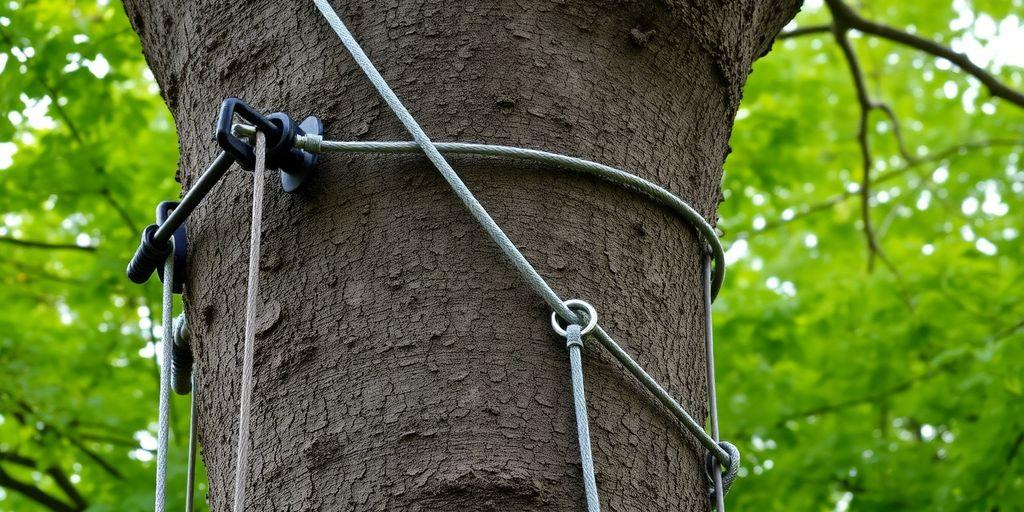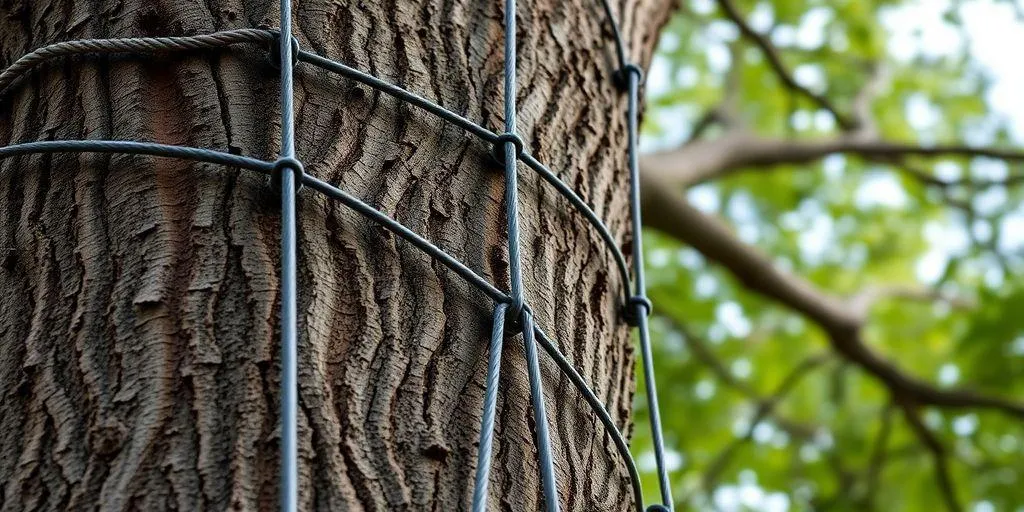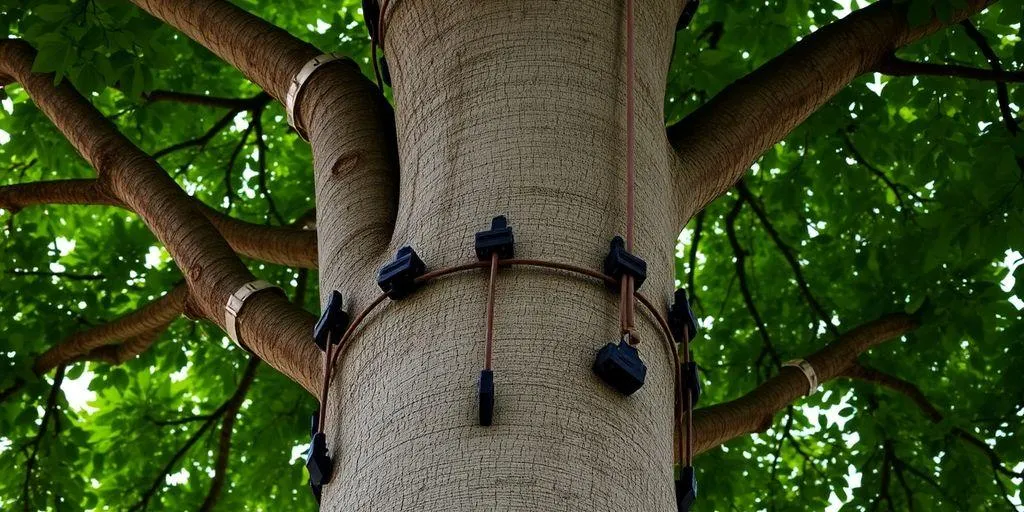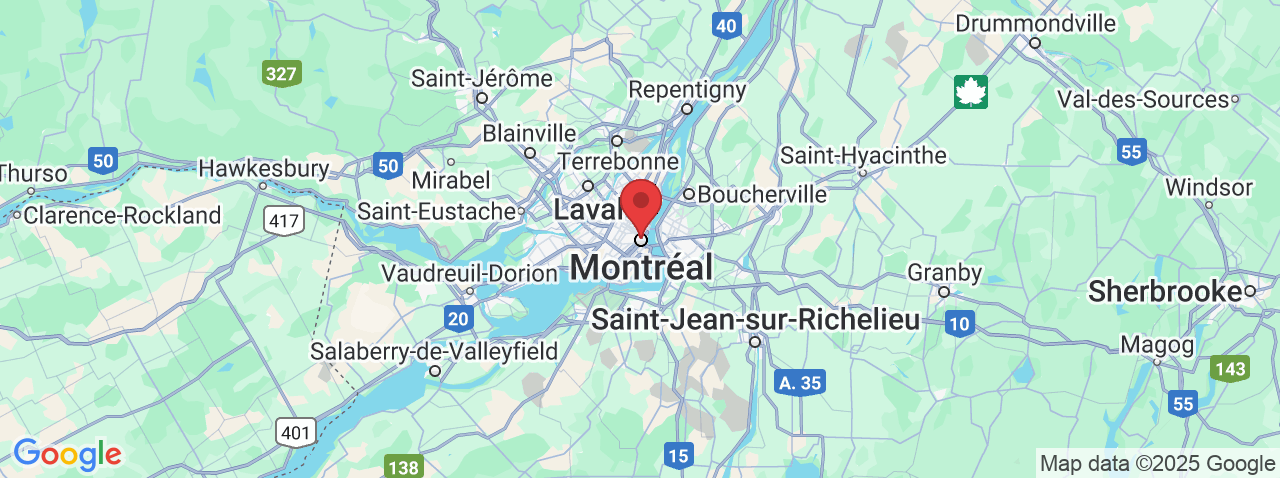Tree Service Montreal
Expert Guide to Cabling & Bracing Montreal: Ensuring Tree Stability and Health
Expert guide on Cabling & Bracing Montreal for tree stability and health. Learn techniques and benefits.
Ever walk around Montreal and notice those big, beautiful trees? They're not just there for looks. They need a bit of help to stand tall and stay healthy, especially with the crazy weather we get. That's where cabling and bracing come in. It's like giving trees a little extra support so they don’t topple over or break apart. This guide is all about how cabling and bracing work in Montreal and why it’s such a big deal.
Key Takeaways
. Cabling and bracing give trees extra support, which is super important in Montreal's tough climate.
. Choosing the right technique depends on the tree's structure, and experts can help pick the best one.
. Regular check-ups after cabling and bracing keep trees healthy and secure for the long haul.
Understanding the Importance of Cabling & Bracing in Montreal

The Role of Cabling & Bracing in Tree Health
When it comes to maintaining the health of our trees, cabling and bracing play a vital part. These techniques involve installing cables or rods to support weak branches or sections of a tree. By reinforcing these areas, we can prevent potential failures that might otherwise harm the tree or surrounding property. It's a proactive approach that helps trees withstand natural stresses, like heavy snow or strong winds, which are common in Montreal.
How Cabling & Bracing Prevents Tree Failures
Tree failures can be catastrophic, not just for the tree itself but also for the safety of people and property nearby. Cabling and bracing help by providing additional support to vulnerable parts of the tree, reducing the likelihood of branches breaking off. This method is particularly useful for trees with multiple trunks or those with large, heavy limbs that could pose a risk. Here’s how it works:
. Cables are installed high in the tree to limit movement and support the branches.
. Braces are rods placed through weak branches to provide structural strength.
. Regular checks ensure the system remains effective.
Why Montreal's Climate Necessitates Cabling & Bracing
Montreal's climate is unique, with cold winters and heavy snowfalls that can stress trees significantly. This climate challenge makes cabling and bracing not just a good idea but often a necessity. Trees in urban areas are particularly vulnerable due to restricted root growth and exposure to pollutants. By using these techniques, we not only protect the trees but also enhance their ability to thrive in such a demanding environment.
In Montreal, where the weather can be unpredictable, ensuring our trees are stable and healthy is a responsibility we can't ignore. Cabling and bracing offer peace of mind, knowing we've taken steps to protect our natural environment.
Choosing the Right Cabling & Bracing Techniques

Assessing Tree Structure for Cabling & Bracing
Before diving into the cabling and bracing process, we must first take a good look at the tree's structure. This means checking out the branches, trunk, and overall health. Weak branches or those with splits might need extra support. It's crucial to identify these areas early to prevent future problems. We want to make sure that the tree can handle the added weight and tension from the cables and braces.
Different Types of Cabling & Bracing Systems
There are several cabling and bracing systems to choose from, each with its pros and cons. Here's a quick breakdown:
. Static Cabling: Uses steel cables for strong, permanent support. Great for trees with severe splits.
. Dynamic Cabling: More flexible, using materials like synthetic rope. Allows for natural movement and growth.
. Bracing Rods: These are threaded rods inserted through weak branches to hold them together.
Choosing the right system depends on the tree's condition and what we aim to achieve.
Consulting with Experts for Optimal Solutions
When it comes to picking the best cabling and bracing technique, consulting with a professional arborist is key. They can assess the tree's needs and suggest the most effective solution. Expert advice ensures that we're not just guessing but making informed decisions. It's about finding the balance between support and allowing the tree to grow naturally.
In the end, the goal of cabling and bracing is to support the tree's natural structure while preventing potential hazards. It's not just about keeping the tree standing; it's about helping it thrive.
Benefits of Professional Cabling & Bracing Services
Ensuring Long-Term Tree Stability
When it comes to maintaining the health and stability of our trees, professional cabling and bracing services play a vital role. These services help prevent branches from splitting or falling, especially during harsh weather conditions. By reinforcing weak branches or trunks with cables and braces, we can significantly reduce the risk of tree failure, thus ensuring the longevity and safety of our trees.
Enhancing Property Safety with Cabling & Bracing
Trees can pose a risk to property and personal safety if not properly maintained. Professional cabling and bracing help mitigate these risks by securing potentially hazardous limbs. This not only protects our homes and other structures from damage but also provides peace of mind knowing that our surroundings are safe.
Promoting Tree Longevity and Health
Through expert cabling and bracing, trees receive the support they need to grow and thrive. This process helps maintain the structural integrity of trees, allowing them to withstand environmental stresses better. Healthy trees contribute to a healthier ecosystem, providing shade, improving air quality, and supporting wildlife
Maintaining Trees After Cabling & Bracing

Regular Inspections and Adjustments
Once we've installed cables and braces, it's not a set-it-and-forget-it deal. Trees grow and change over time, and so do their support needs. Regular inspections are key to making sure everything stays in place and functions as it should. We should aim to check the cabling and bracing systems at least once a year, but more often if the tree is in a high-risk area or shows signs of distress. During these inspections, we look for signs of wear and tear on the hardware and any changes in the tree's structure that might require adjustments.
Signs of Successful Cabling & Bracing
How do we know if the cabling and bracing are doing their job? Well, there are a few things to watch for. Firstly, the tree should appear stable, even during strong winds. Secondly, there should be no visible damage to the bark or branches around the hardware. Lastly, the tree's overall health should remain steady or improve. If we notice any issues, it's important to address them quickly to prevent further problems.
When to Seek Professional Maintenance
Sometimes, despite our best efforts, we might need to call in the pros. If we see any of the following, it's time to get expert help:
. The tree is losing leaves or branches unexpectedly.
. There's noticeable movement in the tree during calm weather.
. We spot any cracks or splits in major limbs.
In these cases, a professional arborist can assess the situation and recommend the best course of action. They have the tools and knowledge to make necessary adjustments or replacements, ensuring that our trees remain safe and healthy.
Keeping an eye on our trees and their supports isn't just about safety—it's about respecting the natural beauty and benefits they bring to our environment. A little vigilance goes a long way in maintaining their health and stability.
